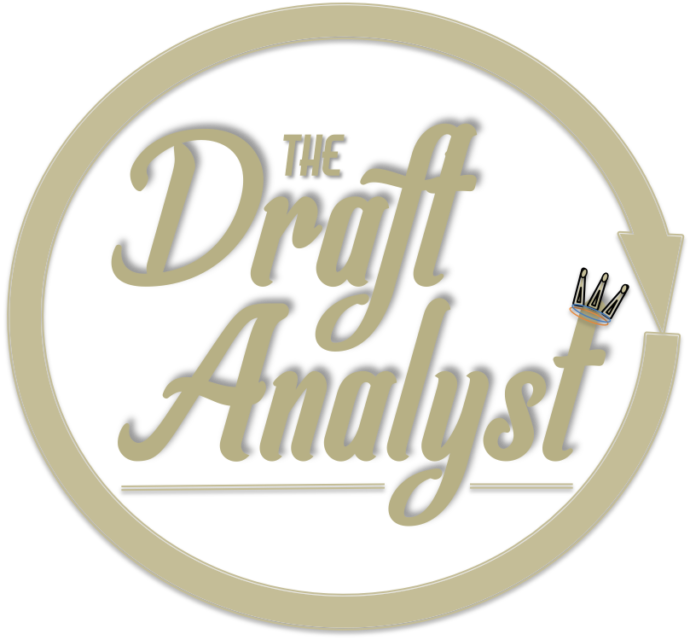 31. LHD Cam Dineen (North Bay Battalion, OHL):
31. LHD Cam Dineen (North Bay Battalion, OHL): The talk around draft circles is the first three defensemen picked in 2016 will not only come out of the OHL, but could all be top-10 picks. But history’s shown us that being a high-profile pick doesn’t guarantee a thing, which is why drafting a sound puck mover like Dineen after Day One’s fireworks could end up as one shrewd move for the Leafs. The Toms River, NJ native bested all his OHL peers in scoring with 59 points in 68 games while used in all situations. He’s not big or overly physical, but he’s silky-smooth with the puck and maintained his consistency even after opposing coaches realized how big of a three-zone threat he was.
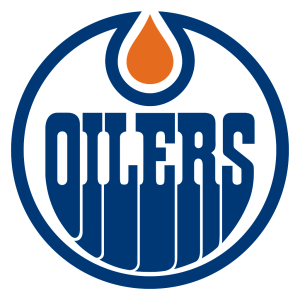 32. LW Givani Smith (Guelph Storm, OHL)
32. LW Givani Smith (Guelph Storm, OHL): The Oilers could use a security blanket for both their forward prospect depth, and Connor McDavid, so drafting this freight train of goal scorer to ride shotgun to No. 97. should yield results in bunches. Smith had the misfortune of playing for a doormat, but he was the team’s second-leading goal scorer and led the OHL with 146 penalty minutes. An excellent skater with the power of a bulldozer, the chiseled winger is a menace around the net and has good enough hands to bury the gimme chances.
 33. LW/RW Boris Katchouk (Sault Ste Marie, OHL):
33. LW/RW Boris Katchouk (Sault Ste Marie, OHL): Katchouk has the reputation as being one of this draft’s hardest workers, and it doesn’t take long into a game to realize it. His instant energy from shift to shift can be both infectious and momentum-swinging, and it’s rare to see a prospect seemingly enjoy working hard all the time. But make no mistake — this kid is no grinder. Katchouk was tasked with top-six minutes in all situations, and delivered with 24 goals in 63 games and a spot on Team Canada’s U18 squad in April.
 34. C Will Bitten (Flint Firebirds, OHL):
34. C Will Bitten (Flint Firebirds, OHL): Bitten may not make up for the gaping hole the Jackets have at center after trading Ryan Johansen, but we can almost guarantee he’ll become a fan favorite. He’s a fast playmaker with a team-first mentality who took control of a crumbling off-ice situation in Flint, leading his Firebirds in both goals and assists, and playing an all-around game. Bitten is extremely slippery and shifty, and he combines excellent vision with sound instincts to make the most out of his shifts. More impressive is that he maintained his level of play as he ran the gauntlet of the high-profile pre-draft events.
 35. C/LW Noah Gregor (Moose Jaw Warriors, WHL):
35. C/LW Noah Gregor (Moose Jaw Warriors, WHL): Gregor is a three-zone roadrunner who screams sleeper, as he bounced back from an injury-plagued rookie season to distinguish himself among Moose Jaw’s forest of elite forwards. He is easily at or near the top of a very talented group of draft-eligible penalty killers, but what makes him worthy of a significant leap-frog is his versatility. Gregor is ridiculously skilled, making plays at high speed and taking advantage of his linemates’ strengths.
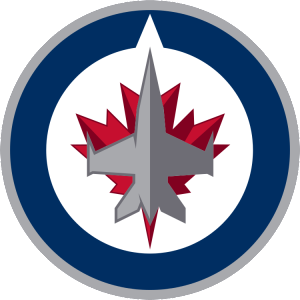 36. LW Adam Mascherin (Kitchener Rangers, OHL):
36. LW Adam Mascherin (Kitchener Rangers, OHL): This power forward’s overall numbers are impressive — only Matt Tkachuk (107) and Alex DeBrincat (101) had more points than Mascherin (81) among OHL first-year eligibles. Short but solid (5’9, 200), he’s an excellent playmaker and stickhandler who makes up for a lack of overall foot speed with patience and man strength. The poor kid has issues accelerating, but again, his lethal shot and vision make him too good a prospect to pass on. If the Jets want someone with unerring precision to feed Patrik Laine for his patented one-timers, Mascherin should be their guy.
 37. RW Carl Grundstrom (Frolunda, SHL):
37. RW Carl Grundstrom (Frolunda, SHL): Everyone knows the Yotes have a tremendous collection of firepower within their organization. But it doesn’t hurt to add the responsible types, which is exactly the category Grundstrom falls under. Quick and relentless on the forecheck, he’s made a name for himself by combining his speed with assertiveness — he was one of the SHL’s top hitters. Grundstrom’s proclivity for forcing turnovers yields a high amount of shot opportunities for both him and his linemates. His ability to make smart, accurate passes within tight quarters is what separates him from your run-of-the-mill sandpaper types.
 38. LHD Samuel Girard (Shawinigan Cataractes, QMJHL):
38. LHD Samuel Girard (Shawinigan Cataractes, QMJHL): A period of power play horror has seemingly up and left the Queen City, as the Sabres jumped from 30th to 12th with the man advantage. But their organization could still use a quarterback, so we recommend nabbing the best one from this draft class. Girard is neither physical nor big (5’9), but boy can he slide and glide with the puck. He’s not a classic end-to-end burner, but his footwork and lateral mobility are top notch. Nobody walks the line and hits his teammates on the tape like Girard, who makes up for his size disadvantage with smart, subtle plays to evade pressure.
 39. C Cam Morrison (Youngstown Phantoms, USHL):
39. C Cam Morrison (Youngstown Phantoms, USHL): You might as well start calling him Mr. Touchdown, because watching this South Bend-bound monster on the ice is reminiscent of a bruising tight end who always finds the end zone. Morrison was named the USHL’s top rookie after winning the OJHL Rookie of the Year in 2015. He’s a classic power forward with a strong desire to get to the net and position himself to receive the puck in optimal scoring areas. Morrison, who boasts a heavy, accurate shot, plays like a bull in a china shop, but it’s generally done while under control and with his head up at all times.
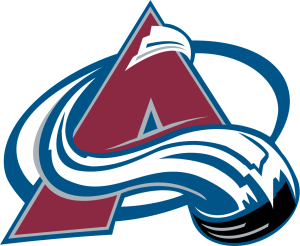 40. RHD Adam Fox (U.S. NTDP):
40. RHD Adam Fox (U.S. NTDP): Recent trade rumors of puck-moving blueliner Tyson Barrie are odd to say the least, but whether he’s in or out should make little difference if the Av’s have the chance to nab this dynamic playmaker who was named top defenseman at the 2016 U18 worlds. Fox set the single-season NTDP scoring mark for defensemen with 59 points and basically took the No. 1 role away from Chad Krys. Graceful and extremely creative, he’s headed to Harvard in the fall, so being an Ivy Leaguer may mean he’ll be there for a while. Still, his view of the ice is already pro-level, and he’d give the Av’s yet another offensive weapon.
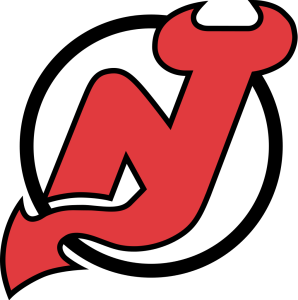 41. LW Riley Tufte (Fargo Force, USHL):
41. LW Riley Tufte (Fargo Force, USHL): Don’t bank of Tufte going this low — many see him as a surefire first round pick thanks to his freakish combination of size (6’5) and skill. Tufte was the top pick in the 2014 USHL Futures Draft, then won the state of Minnesota’s famed “Mr. Hockey” award after starring for Blaine High School this season. He didn’t have the best season for Fargo, but you can see how big of a home run he’d be if all things pan out. Tufte is an excellent skater for a big man and his goal-scoring acumen is reminiscent of a young John Leclair from his Vermont days. His decision to quit the USHL and head back to high school still doesn’t sit well with us, but who are we to stop the young man from making life choices.
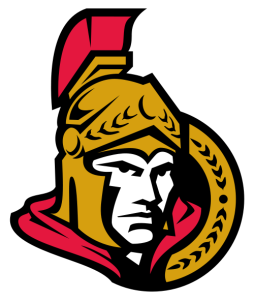 42. RW Taylor Raddysh (Erie Otters, OHL)
42. RW Taylor Raddysh (Erie Otters, OHL): Goal-scoring power forward with an NHL-ready build who may be a bit undervalued playing alongside Erie’s notable talent the last two seasons. He was able to rack up assists playing on the Otters’ top line with Dylan Strome and Alex DeBrincat, but keep in mind that his speed and tenacity on the forecheck created scoring opportunities without the benefit of getting his name of the scoresheet. Raddysh is a very good skater with good closing speed, which he combines with a long reach to force turnovers.
 43. LW Jonathan Dahlen (Timra, Allsvenskan):
43. LW Jonathan Dahlen (Timra, Allsvenskan): Predatory winger with an excellent touch around the net, much like his father Ulf who played over a dozen NHL seasons as a grind-it-out power foward. Jonathan’s game differs from his father’s in that he’s a bit quicker and more flashy but not nearly as physical. He had an outstanding season for Timra, with solid showings at both the U18 Hlinka and U19 Five Nations.
 *44. (BOS) LHD Kale Clague (Brandon Wheat Kings, WHL):
*44. (BOS) LHD Kale Clague (Brandon Wheat Kings, WHL): A wiry two-way blueliner with quickness and an exceptional understanding of his position, Clague had a strong enough second half to finish among the WHL’s top scoring draft-eligible rearguards. Even more impressive is that he did so without the benefit of logging big minutes, as he took a back seat to older prospects Ivan Provorov and Macoy Erkamps. The Wheaties may be a stacked team, but there were periods when Clague was the back end’s calming presense, which in our view says a lot about his upside. He can break out with hard, accurate stretch passes or a smooth, calculated rush up ice.
 *45. (MIN) LHD Lucas Johansen (Kelowna Rockets, WHL):
*45. (MIN) LHD Lucas Johansen (Kelowna Rockets, WHL): Kelowna’s top defender who has excellent instincts and makes very good reads. What makes him stand out is that he understands the nuances of becoming a consistent three-zone player. Johansen is a very good skater who loves to jump into the attack and has even outskated his forwards in order to lend puck support. He can run a power play with efficiency, but he needs to fill into his 6’1 frame in order to be more consistent during chest-to-chest battles. Johansen has a very good shot and makes clean plays in tight spaces in the offensive zone.
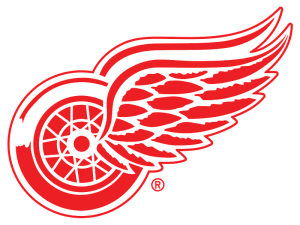 46. RHD Frederic Allard (Chicoutimi Sagueneens, QMJHL):
46. RHD Frederic Allard (Chicoutimi Sagueneens, QMJHL): The Red Wings’ blue line has been devoid of on-ice leadership for the last few seasons, and it’s clearly affecting them in the postseason. Allard won’t provide immediate help, but the leadership qualities and minute-munching he displayed for an overachieving Chicoutimi squad should make him a no-brainer for the Wings. He has a very hard shot, and he doesn’t shy away from using it. His one-on-one play is among the QMJHL’s best, and he will do whatever it takes to win.
 47. W/C Janne Kuokkanen (Karpat U20, Liiga Jrs):
47. W/C Janne Kuokkanen (Karpat U20, Liiga Jrs): Tall, lean puck distributor who we expect to beef up when it’s time to make the jump to North America. Kuokkanen is a highly-cerebral player, using patience and precision passing to carve up any defensive scheme. He’s been a star for Finland in the international circuit, culminating with a superb performance and a gold medal at the U18 World championship. His instant chemistry with Jesse Puljujarvi is something to keep an eye on — both should play for Karpat if Puljujarvi decides to stay in Europe.
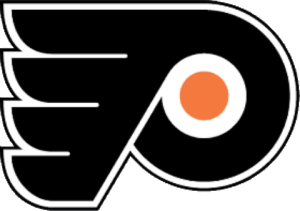 48. RW Tage Thompson (Connecticut, Hockey East):
48. RW Tage Thompson (Connecticut, Hockey East): A former member of the NTDP who starred as a freshman for UConn, Thompson is a sniper with an excellent shot whose development in terms of NHL readiness has a handful of years remaining. He’s pretty one-dimensional at this point — all but one of his 14 goals were scored on the power play. But 5-on-5 production will come in time, as will his ability to continue battling well after initial contact with an opponent. He’s got the kind of size (6’2) you’d love to see on your flank, but there’s some work left to do.
 *49. (NYI) RHD Andrew Peeke (Green Bay Gamblers, USHL):
*49. (NYI) RHD Andrew Peeke (Green Bay Gamblers, USHL): Labeling a defenseman as the “shut down” variety is not only cliche, but extremely subjective. Peeke however is in our view the draft’s best one-on-one defender, and it means something when you can impact a game’s complexion with this ability. He is big and mobile, using an active stick and mammoth wingspan to fix onrushing opponents into a failed decision. Peeke can also play the power play thanks to his wicked shot and ability to thread the needle. Add Peeke to the list of the growing number of Florida-born prospects with serious NHL upside.
 *50. (NYR) C/W Matt Filipe (Cedar Rapids Roughriders, USHL):
*50. (NYR) C/W Matt Filipe (Cedar Rapids Roughriders, USHL): The centerpiece of the Hockey East champion Huskies’ best recruiting class in years is actually a legacy who spent many an evening as a kid at Matthews Arena. Filipe, whose father Paul played at Northeastern in the early 1980’s, is a converted center who now plays a speed/power game from the wing. He was named to the USHL All-Rookie Team, and his instincts around the net are excellent. He’s already listed at 6’2, 200 pounds, so the defensemen in the college circuit should certainly have their hands full.
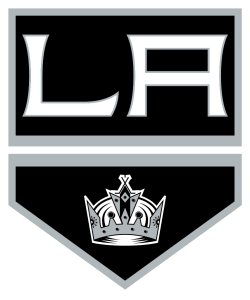 51. G Filip Gustavsson (Lulea, SHL):
51. G Filip Gustavsson (Lulea, SHL): Kings’ GM Dean Lombardi has every right to be apprehensive about drafting a goalie, let alone with his first pick — his draft record in the goalie department since 2008 hasn’t been all that great because no kid had a chance to unseat a two-time Cup winner. But the writing is on the wall for his organization, which faces the reality that incumbent starter Jonathan Quick is not only pregnable, but turned 30 in January. Gustavsson stylistically is a bit different from Quick – the former is far more rigid, upright and textbook. Standing an NHL-appealing 6’2, Gustavsson is a good bet to go higher as one of the top-trained European netminders in his class.
 *52. (CHI) C Trent Frederic (U.S. NTDP)
*52. (CHI) C Trent Frederic (U.S. NTDP) The Flyers have yet to recover from trading heart-soul pivot Mike Richards, so why not take a stab at drafting a bigger, quicker version of him. We’re not saying Frederic will be a big point producer, but he’ll certainly appeal to the Philly faithful with his hutsle-and-bustle effort and an affinity for crease-crashing. He was Team USA’s top penalty killer and took the majority of late defensive-zone draws while centering their second line. Frederic is headed to the University of Wisconsin in the fall.
 *53. (Comp) RW Wade Allison (Tri-City, USHL):
*53. (Comp) RW Wade Allison (Tri-City, USHL): Rugged two-way power forward with a late-1997 birthdate who guided the Storm to a USHL title with a clutch playoff performance. Allison is headed to Western Michigan, where coach Andy Murray is probably chomping at the bit to pencil him into his top six. He’s a versatile player who can change the momentum of a game in a variety of ways; deliver a big hit, duke it out in a tilt or use his quick hands and stick to convert a turnover into a scoring chance. Allison’s skating is rather average, but his long reach allows him to protect the puck extremely well and render rear harassment useless. He plays a well-thought positional game, and his aggressive, in-your-face style can be infectious. Allison can take a beating all game long and still maintain his compete level, as getting hit hard only seems to motivate him more.
 *54. (FLA) LW Simon Stransky (Prince Albert Raiders, WHL):
*54. (FLA) LW Simon Stransky (Prince Albert Raiders, WHL): Stransky is a mature playmaker whose pass-first mentality masks his underrated shot and goal scoring capabilities. He started off red hot and earned a spot on the Czech national junior team before returning for a good, not great second half in Prince Albert. Nevertheless, he’s a puck hound who can stubbornly control the disc in order to wait for options to appear. The Flames could use some skill on their depth lines, and Stransky is one of the best pure passers at this stage of the second round.
 *55. (ANA) RHD Filip Hronek (Mountfield HK, Extraliga):
*55. (ANA) RHD Filip Hronek (Mountfield HK, Extraliga): The Penguins may be a hot item, but with all due respect to oft-injured Olli Maatta, their defense is a hodge-podge of veterans, busts and castaways. Successful as they may be, the blueline prospect pool needs an infusion of talent, and Hronek is an excellent prospect to kickstart the replenishment. He’s delivered on some tough assignments as a teenager thanks to a fearless mentality and excellent breakout abilities. Whether with stick or skate, Hronek contributes towards consistently dictating the tempo, and his mental agility and mobility makes us think the offense will quickly follow.
 *56. (DAL) G Evan Fitzpatrick (Sherbrooke Phoenix, QMJHL):
*56. (DAL) G Evan Fitzpatrick (Sherbrooke Phoenix, QMJHL): With a seemingly endless amount of early-round picks, the Flames would be foolish not to continue to address an organizational need in net. And with all due respect to unproven youngsters John Gillies and Mason Macdonald, neither has the kind of star upside we see in Fitzpatrick, a classic butterfly goalie with an imposing silhouette who faced more rubber than most QMJHL goalies. Playing for a bad team has few perks, with one being able to assess his play under constant pressure.
 *57. (WSH) C/W Nathan Bastian (Mississauga Steelheads, OHL):
*57. (WSH) C/W Nathan Bastian (Mississauga Steelheads, OHL): Drafting all these skill players requires somebody to cover up for them every so often, and Bastian certainly comes reputable. He played alongside Mike McLeod and Alex Nylander for large chunks of the regular season, using physicality, net presence and constant hustle to make life easier for his linemates and allow them to do what they do best. He stands a whopping 6’4 and weighs in at 205, which is scary to think when assessing 18 year olds. Bastian won’t wow you with any particular skill, but he’s great to have both in the room and on the ice.
 58. LHD Ryan Lindgren (U.S. NTDP):
58. LHD Ryan Lindgren (U.S. NTDP): This future Minnesota Gopher served as captain for Team USA, and you can certainly see why he was chosen. He’s a strong young man with very good offensive instincts, using his size (6’0, 200) and strength to lean on opponents as he separated them from the puck. He’s a very good skater with a keen eye for openings. Lindgren is a battler and a tough one-on-one matchup, and can be trusted to move the puck up the ice without it breaking into a million pieces. He can play a mean. physical game when the situation warrants it, and is not intimidated by an opponent’s speed or size. Lindgren has outstanding leadership traits and should continue to play roles of importance and responsibility.
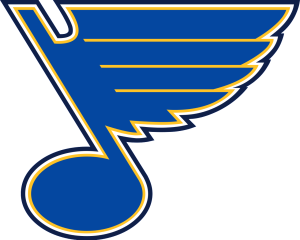 59. C Aapeli Rasanen (Tappara U20, Liiga Jrs):
59. C Aapeli Rasanen (Tappara U20, Liiga Jrs): All signs point towards this special teams dynamo becoming one of the better two-way players this draft produces. Not only does he do it all on the ice — playmaking, speed, escapability, tenacity, versatility — but he’s a student of the game who spends time honing his craft away from the rink. Rasanen clubbed the international circuit to a tune of almost a point per game, and he’s almost 200 pounds before turning 18 in June. The Blues are in search of skill players, and Rasanen won’t disappoint them. He forechecks and backchecks better than most of his draft peers, and has excellent work habits.
 60. C Cliff Pu (London Knights, OHL):
60. C Cliff Pu (London Knights, OHL): If you’ve been following our rankings, you might be saying “Cliff Who” when noticing his meteoric rise from the near-bottom to the near-top. Take our word for it when he say he’s deserved every bit of the recent hype, delivering clutch play and two-way dominance for a London team almost anyone would have to scratch and claw their way to earn ice time. Why is he special? Pu’s big (6’2), fast and can fire off a very good shot. But the biggest eye opener was how he was able to produce in limited time and received next to nothing in offensive zone starts and/or on the power play. When London’s big names (Tkachuk, Dvorak, Marner etc.) were at the WJC, it was Pu and Max Jones who ran the offense.
 61. LHD Logan Stanley (Windsor Spitfires, OHL):
61. LHD Logan Stanley (Windsor Spitfires, OHL): A towering blueliner who is a huge project as he’s still learning the position. Stanley could go higher (and likely will), but he’s a project who should be kept on a short leash. The Pens like to go for the boom-or-bust types early, and the physical 6’7 Windsor defender has the potential to anchor a top pairing. That being said, he quite a ways away. He brings physicality and improved instincts within the offensive zone, which helps him get into position for his strong slap shot. Stanley is prone to make questionable decisions at inopportune times, but the right staff and environment should be able to work him through the tough times.
*Colorado reacquired their 2016 2nd round pick from San Jose in a 2015 Draft Day trade in which the Sharks traded a 2015 2nd round pick (39th overall — A.J. Greer), this pick and a 2017 6th round pick to the Avalanche in exchange for a 2015 2nd round pick (31st overall — Jeremy Roy). San Jose previously acquired this pick from Colorado in the Brad Stuart trade.
*Montreal owns Buffalo’s 2016 2nd round pick via Minnesota from the Josh Gorges trade. The Sabres previously acquired this pick from the Wild in the Matt Moulson trade.
*Tampa Bay owns Boston’s 2016 2nd round pick from the Brett Connolly trade.
*Boston owns the New York Islanders’ 2016 2nd round pick from the Johnny Boychuk trade.
*Carolina owns the New York Rangers’ 2016 2nd round pick via the Eric Staal trade.
*Philadelphia owns Chicago’s 2016 2nd round pick from Kimmo Timonen trade.
*Arizona receives a compensatory pick in the 2016 2nd round for not re-signing 2014 first round pick Conner Bleackley, who was drafted by Colorado and later acquired by the Coyotes in the Mikael Boedker trade.
*Calgary owns Florida’s 2016 2nd round pick via the Jiri Hudler trade.
*Pittsburgh owns Anaheim’s 2016 2nd round pick via Vancouver via the Brandon Sutter trade. The Canucks previously acquired this pick from the Ducks in the Kevin Bieksa trade.
*Calgary owns Dallas’s 2016 2nd round pick via a condition in the Kris Russel trade. The Flames would have received the Stars’ 2016 first rounder over this pick had they reached the 2016 Western Conference finals.
*Toronto returned Pittsburgh’s 2016 2nd round pick from the Daniel Winnik trade. Pittsburgh reacquired this pick from Toronto as a condition in the Phil Kessel trade if they qualified for the 2016 Stanley Cup Playoffs.
